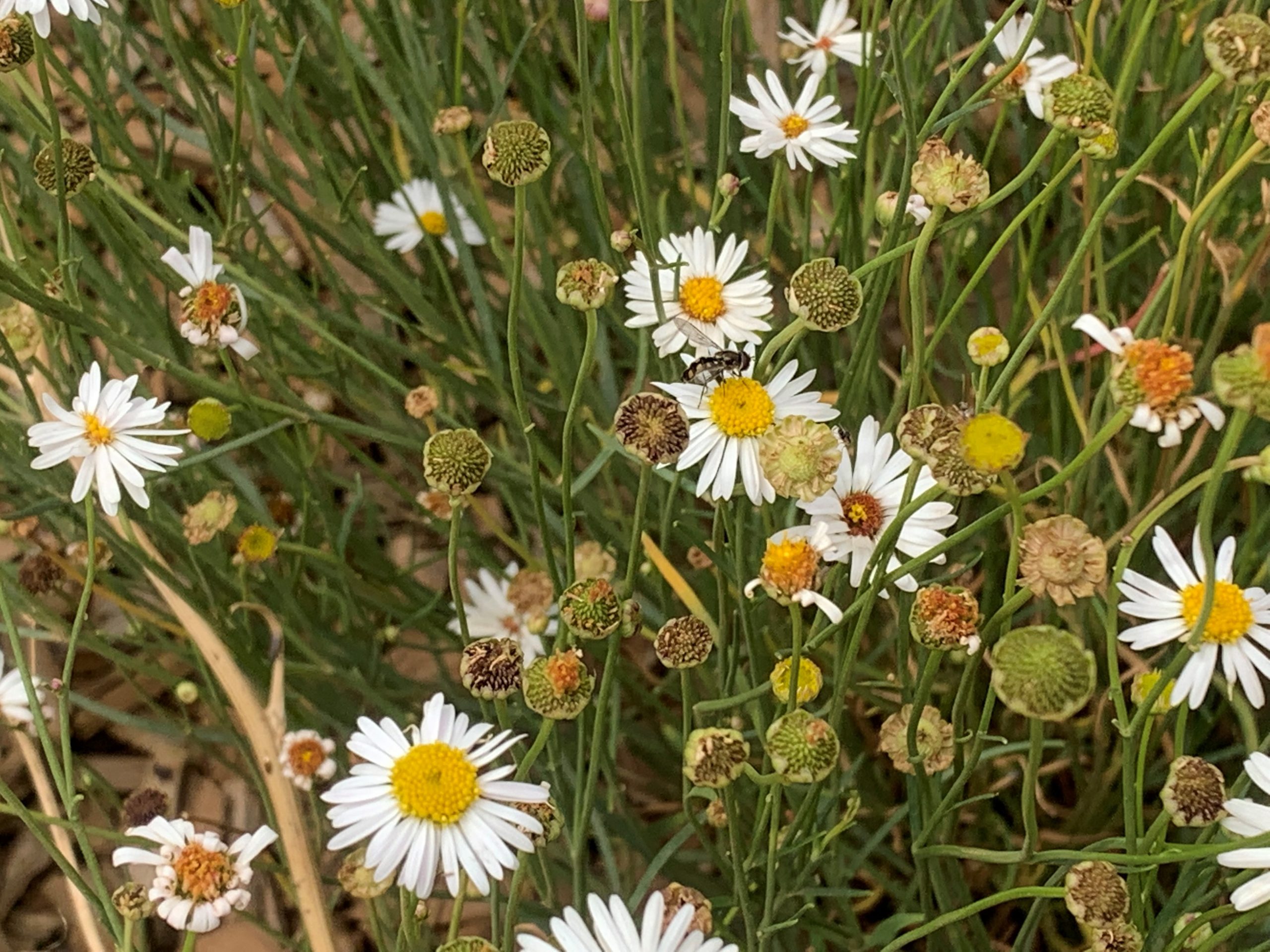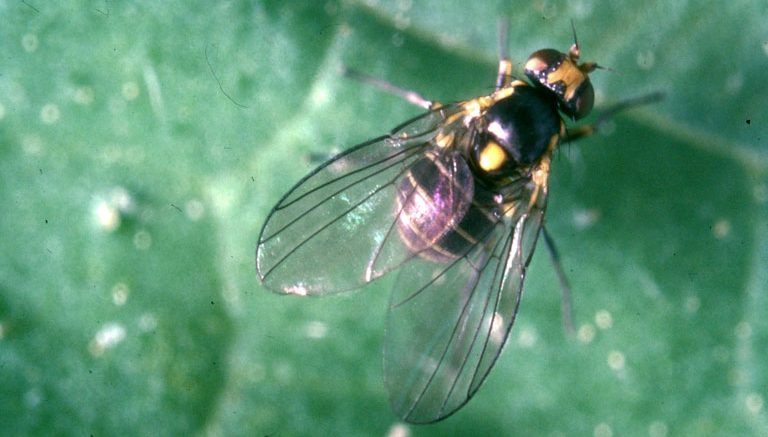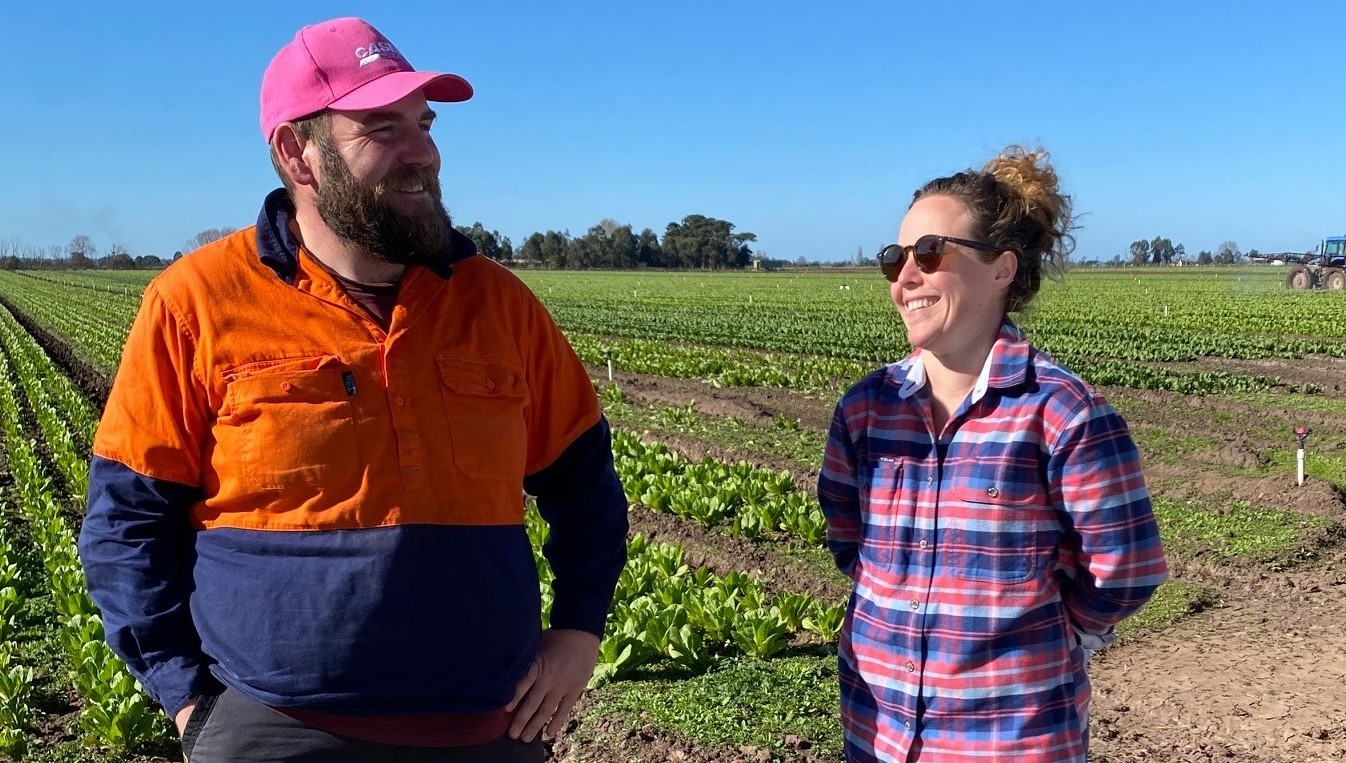
An update from VegNET – Victoria (North, West and South-East regions)
28 February 2022
Key learnings from Australia’s serpentine leafminer incursion
28 February 2022Drawing from opportunities presented from various R&D projects, growers in the Macalister Irrigation District are implementing various practices and strategies to protect the surrounding waterways from nutrient and sediment runoff, as well as increasing their water use efficiency. VegNET – Gippsland Regional Development Officer Bonnie Dawson provides an overview.
The Macalister Irrigation District (MID) in Central Gippsland provides secure water to some of Australia’s largest salad producers. It is fed by Lake Glenmaggie and the Thomson, Macalister and Avon Rivers. What flows past – and off – these properties ends up in Lake Wellington at the start of the Gippsland Lakes system.
Protecting Gippsland waterways has been identified as a priority by the Regional Extension Advisory Group (REAG), as well as other growers and stakeholders in VegNET Gippsland’s Regional Extension Strategy. As such, VegNET – Gippsland contributes to the Lake Wellington Land and Water Management Plan.
The focus is not just on water use efficiency, but also minimising sediment and nutrient runoff. These issues have been emphasised by one of the wettest years in living memory, in contrast to the drought of years’ prior.
Buffer zones and effective drainage to protect surrounding waterways
A farm walk was held at Schreurs & Sons’ Middle Tarwin property last year. On the day, attendees were shown design features that support the property to recycle water and nutrients and minimise its impact on the surrounding Tarwin River.
As a result, growers in the MID, including Hussey & Co and Riviera Farms, reported that they are now implementing or considering changes to the design of their drainage.
Other growers reported that as a result of attending, they intend to increase their plantings of wetland grasses and native species in order to capture sediment and nutrients and therefore protect the waterways surrounding their properties.
VegNET – Gippsland is also working to build on existing connections with the local Landcare networks to support the identification and supply of appropriate plants for buffer zones in this area, which has also previously been modelled by Dicky Bill.
Biodiversity to support Integrated Pest Management
The VegNET – Gippsland REAG has also decided to promote the adoption of Integrated Pest Management to reduce growers’ reliance on limited chemistry for pest control.
Native plantings will not only act as a buffer to minimise runoff into surrounding drains and waterways, but also have the potential to host beneficial insects. Growers who are participating in the EnviroVeg program will be recognised for their actions in the continuous improvement through their annual self-assessments.
Soil moisture monitoring demonstration
Food & Fibre Gippsland was successful in a bid for funding from the Federal Government’s Future Drought Fund to demonstrate soil moisture sensors to the local industry.
Delivered by VegNET – Gippsland, a Project Reference Group has been established bringing together Elders agronomist Noel Jansz, Agriculture Victoria irrigation specialists Alexis Killoran and Billy Marshall and Industry Development Manager Scott Botten, West Gippsland Catchment Management Authority’s Anthony Goode, and AUSVEG VegNET Regional Development Officer Danielle Park.
The original aim of the project is to build drought resilience among Gippsland’s vegetable producers by increasing the adoption of the technology. However, the wet conditions have meant it has been a challenging season to demonstrate increases in water use efficiency!
Understanding the property’s drainage and potential flow of nutrients and sediment has become increasingly important. As well as the CropX soil moisture sensors, host grower Tripod Farmers has been provided with soil and drainage mapping by Precision Agriculture to gain a more accurate understanding of property’s drainage and risk of nutrient and sediment loss.
By involving the local Agriculture Victoria irrigation team and the West Gippsland Catchment Management Authority, it is hoped that the project will increase their awareness and capacity to support the expanding local vegetable industry – therefore increasing the vegetable industry’s engagement with the local sustainable irrigation program.
The demonstration will continue until an on-site field day in June 2022, where grower Walter Chadwick and the Project Reference Group will sum up the learnings and reflect on the project. A series of resources summarising these learnings will also be developed.
AUSVEG VIC R&D Adoption award
The AUSVEG VIC Awards for Excellence is returning in 2022 and will be awarding a grower or industry stakeholder the R&D Adoption award. This sits alongside the coveted Grower of the Year accolade.
This award aims to highlight how Victoria’s growers are benefiting from R&D outcomes on-farm – whether it’s pre-harvest, post-harvest or sharing key findings with the wider industry. Keep an eye out for further details about the AUSVEG VIC Awards for Excellence, including key dates and how to nominate industry members.
Find out more
Please contact VegNET – Gippsland Regional Development Officer Bonnie Dawson from Food and Fibre Gippsland on 0407 683 938 or email bonnie.dawson@foodandfibregippsland.com.au.
VegNET 3.0 is a strategic levy investment under the Hort Innovation Vegetable Fund.
This project has been funded by Hort Innovation using the vegetable research and development levy and contributions from the Australian Government.
Project Number: VG21000
Cover image: VegNET’s Bonnie Dawson (right) with grower Walter Chadwick.

